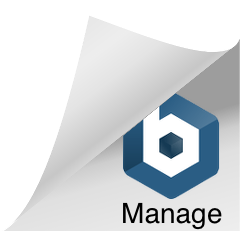Talent Mobility: Powerful Strategy to Retain Your Best Employees

“Employees don’t leave jobs; they leave managers and stagnant career paths.” Imagine a talented employee who has been with your organization for years but recently starts disengaging, not because of the work itself, but because they see no clear opportunity to grow or explore new challenges within the company. This common scenario highlights a crucial retention challenge that many HR professionals face today. Talent mobility—the ability to move employees across roles, departments, and projects—offers a strategic solution to keep such valuable talent motivated, engaged, and committed. In this post, we explore how creating transparent career pathways through talent mobility can transform retention strategies and empower both employees and organizations to thrive.
Understanding Talent Mobility
Talent mobility refers to facilitating and encouraging employees to transition into new roles or projects that align with their skills, aspirations, and the organization’s needs. It includes lateral moves, promotions, cross-functional projects, secondments, and internal gig opportunities. Unlike traditional career paths tied to hierarchical promotions, talent mobility is dynamic and flexible, focusing on growth through varied experiences.
Why Talent Mobility Matters for Retention
Increases Engagement and Job Satisfaction
Employees who perceive clear opportunities for career advancement within their organization are more likely to stay. Talent mobility introduces fresh challenges and learning opportunities, preventing stagnation and disengagement.
Builds Workforce Agility
By moving employees across roles and functions, organizations build versatile talent pools that can adapt to changing business needs. This agility is crucial in a rapidly evolving market.
Enhances Skill Development
Exposure to different roles and teams accelerates skill acquisition and broadens employee perspectives, increasing their value both to the company and their own careers.
Reduces Hiring Costs
Filling roles internally is often faster and less expensive compared to external hiring. It also reduces the risks associated with new hires unfamiliar with company culture.
Research Insights
According to a SHRM article (2023), employees who move within a company—through new roles, departments, or promotions—are significantly more likely to stay with their employer. A LinkedIn report highlights that organizations with high internal mobility retain employees nearly twice as long (5.4 years vs. 2.9 years), and promoted employees are 70% more likely to stay long term (LinkedIn source). Additionally, Deloitte’s research identifies that companies with high internal mobility maintain 41% lower turnover rates. Gallup’s findings show that employees with internal mobility opportunities are 3.5 times more likely to be engaged at work, boosting retention and productivity (Gallup study).
Real-Life Example: AT&T’s Internal Mobility Transformation
AT&T undertook a large-scale internal mobility initiative to address rapid technology changes and upskill its workforce. By implementing an internal job marketplace, offering career coaching, and creating rotational assignments, AT&T empowered employees to explore new roles aligned with their career goals. This resulted in over 60% of open positions being filled internally, significantly reducing turnover and boosting employee engagement (Fuel50 case study).
Building Transparent Career Pathways
Transparency is key to successful talent mobility initiatives. Employees need clarity about available opportunities, the skills required, and the paths to achieve their desired roles.
Mapping Career Ladders and Lattices
Develop clear, visual frameworks that illustrate possible career trajectories, including lateral moves and cross-functional options. Highlight skill requirements and typical timelines for progression.
Skills and Competency Assessments
Regularly evaluate employee skills to identify gaps and readiness for new roles. Use this data to tailor development plans that prepare employees for mobility.
Actionable Takeaways for HR Professionals
- Conduct an internal mobility audit: Assess current policies, employee movement patterns, and roadblocks.
- Design transparent and accessible career pathways that include lateral and cross-functional moves.
- Leverage technology to support internal postings and skill tracking.
- Foster a culture where managers actively support internal career moves and development.
- Communicate regularly and clearly about available opportunities and success stories to motivate employees.
Conclusion
Talent mobility is not just a perk but a strategic imperative for retention in modern organizations. By creating transparent career pathways and enabling employees to grow within their current workplace, HR leaders unlock a powerful lever to keep their workforce engaged, skilled, and committed. How is your organization cultivating talent mobility to sustain retention and foster growth?
References
https://www.shrm.org/topics-tools/news/talent-acquisition/study-internal-mobility-boosts-retention
https://www.gallup.com/workplace/236927/right-culture-not-employee-satisfaction.aspx









